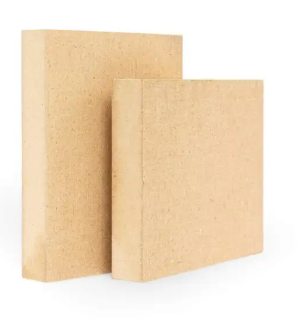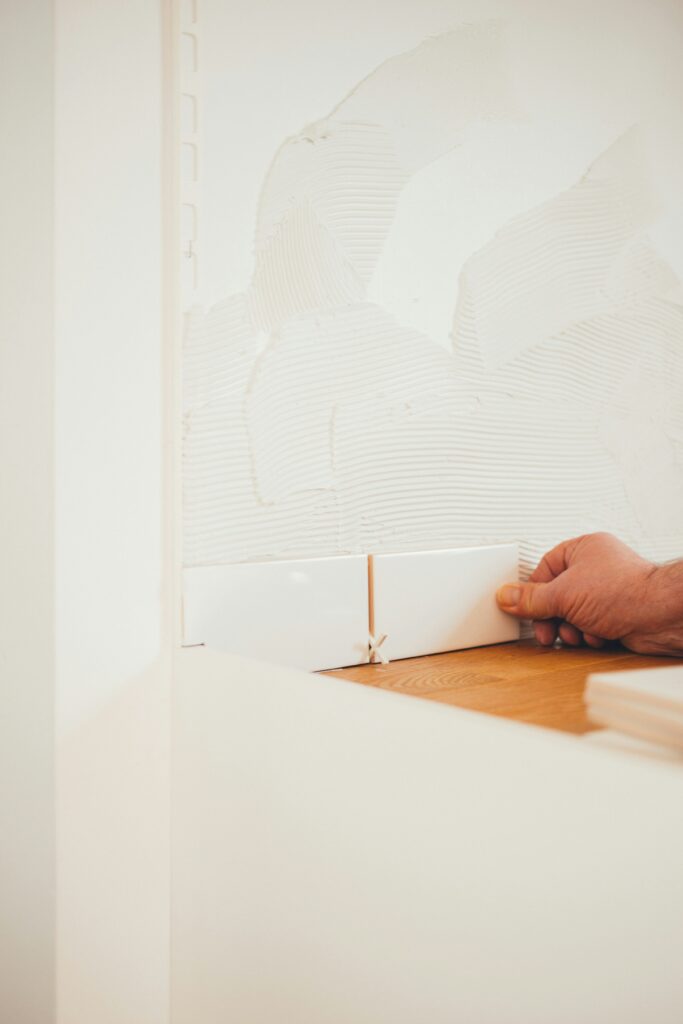By Mercedes Quintanilla
Currently many chemicals are found in construction materials, some are related to cancer, fertility problems, allergies, asthma, etc. The environment is also affected, thus undermining ecosystems and endangering surrounding communities.
Next, I will list materials that are healthier, sustainable, and low in carbon, that you can use regardless of whether the project will be WELL certified or not.

1. Composite wood products.
Wood is considered a healthy material however when pieces of wood are glued together, composite wood products sometimes contain formaldehyde (a human carcinogen) which is an ingredient in the glue.
A healthier alternative to most MDF with up to 10% added resins or formaldehyde, the Roseburg’s Medite II MDF, is a moisture-resistant, multi-purpose medium-density fiberboard manufactured with up to 92% content recycled cellulose
2. Countertops.
The problems that are related to these elemets depend on the type of surface, for instance, natural stone by itself is not harmful but when a coating containing polyfluoroalkyl or petroleum derivatives is added it can create serious health effects.
Sintered Stone Slab – Lapitec, is an alternative to marble made from natural minerals, it is also a reversible product, which means that it could be turned back into raw minerals to be reused later. It is suitable for interior or exterior cladding, flooring, walls and ventilated facades.
3. Isulation.
Insulation is a material that has long been scrutinized by the green building movement, so one of the biggest issues is how to balance the demand for its use and the impacts it has on human health? That’s why it’s important to holistically approach health and sustainability by considering thermal performance and renewable and recycled resources, while avoiding commonly added toxic chemicals.
EcoBatt insulation is free of formaldehyde, acrylics and artificial colors. This insulation combines sand, post-consumer recycled bottle glass and Knauf’s ECOSE technology. It can be used for walls, ceilings, sound control, floors, attics, and mid-floor applications. This product is free of contaminants included in the Declare Red List.
4. Drywall.
The content of gypsum boards can be dangerous, such as gypsum from flue gas desulfurization, since its base is fly ash, which is a by-product of burning coal that may contain residues of heavy metals such as mercury. Clay and magnesium oxide boards are healthier alternatives.
The Homasote 440 Sound Barrier Board is made from 98% recycled paper from old newspapers, books and papers. These panels are free of formaldehyde-containing adhesives. The paraffin is used to repel water and prevent mildew, while the copper additive provides a non-toxic way to repel pests.
5. Carpets.
Synthetic carpets contain many components and additives used to resist mold, stains and fire, so it is necessary to know which brands offer healthier alternatives.
Interface is one of my favorite brands, one of their healthy collections is Embodied Beauty, their yarns are recycled nylon, and they have two backing systems, plus they contain 47% biobased content.
6. Tiles.
Ceramic and porcelain tile are generally healthy choices as they are made up of natural materials like clays, feldspar, and quartz. Unfortunately they may contain toxic additives in their enamels and pigments.
The raw brick that makes up the Fireclay thin glazed brick is obtained through Clay 95-100%, Frits (lead-free) 2-5%, Manganese dioxide 0-3%, Chromite 0-3%, Barium carbonate 0-3%. Bricks provide a strong, durable, and easy-to-clean surface suitable for a variety of projects.

7. Floor.
The choice of vinyl floors or also known as LVT must be very meticulous since some components release highly toxic chemical substances called dioxins and these persist in the human body for years. The healthiest alternatives are cork, natural rubber or bio-based materials that avoid the inclusion of vinyl.
Patcraft’s Ecosystem are bio-based flooring products composed of up to 50% vegetable oils. Floor compositions avoid orthophthalates, chlorine and solvents. Inspired by its customers’ desire for a resilient, PVC-free floor, EcoSystem is a plank and sheet collection featuring blended wood patterns and abstract tile and sheet. Derived from biobased fast feedstocks like canola, rapeseed, and castor oil, EcoSystem is free of orthophthalates, pasticants, and solvents and is Cradle to Cradle Certified Silver.
8. Interior paints.
Some of the most alarming components of paint are volatile organics, binders, pigments and additives due to toxicity problems. Titanium dioxide is used for pigmentation, the whiter the pigment, the more titanium dioxide.
The healthiest paints are those of vegetable origin instead of plastic. Benjamin Moore’s Aura line is a Zero VOC interior acrylic paint. It is available in a wide range of colours, in matt, semi-gloss, satin and semi-gloss sheens.
In conclusion, it is always good to keep up to date in terms of materials, because they not only represent a problem for our health, but also for ecosystems. I invite you to keep an eye on this website where i update materials in its different aspects and applications.
Read the Comments +